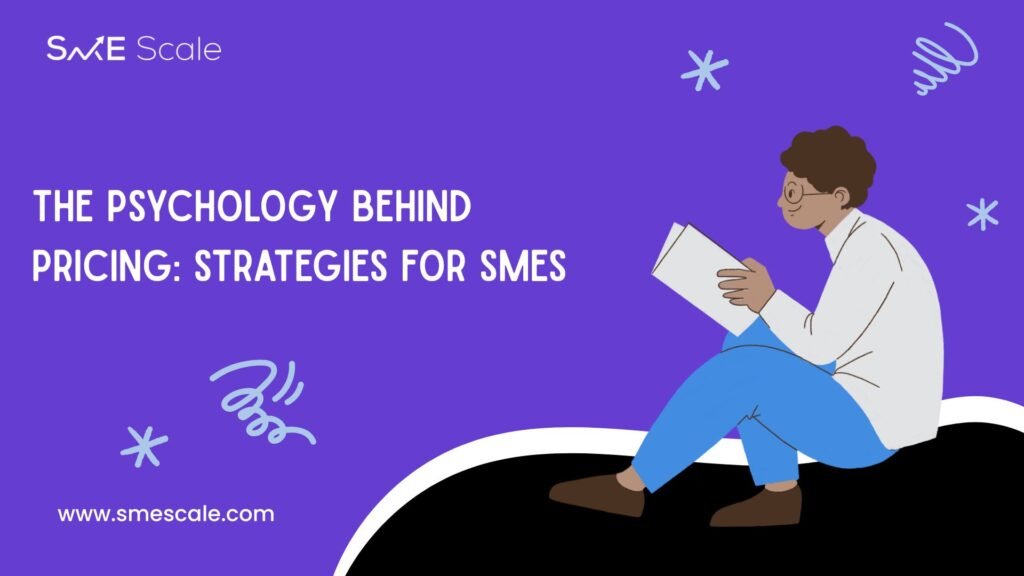
The Psychology Behind Pricing: Strategies for SMEs
How to Use Psychological Pricing to Drive Growth and Conversions
For many small and medium-sized enterprises (SMEs), pricing feels like a balancing act—charge too much and lose customers, charge too little and kill your margins. But what if pricing wasn’t just a numbers game? What if the real power of pricing lies in how people perceive value?
At SME Scale, we work with business owners to implement scalable sales systems that are rooted in psychology. One of the most overlooked growth levers in any business is pricing strategy. In this article, we’ll explore the psychology behind pricing, how SMEs can use it to their advantage, and showcase a real-life case study that proves pricing isn’t just about math—it’s about mindset.
Why Pricing Is a Psychological Game
Behavioral science has shown that people rarely make buying decisions based solely on logic. Instead, emotions, biases, and heuristics (mental shortcuts) shape their choices. Here are some key psychological pricing concepts:
1. Charm Pricing (The Power of 9s)
Prices ending in “.99” often feel significantly cheaper than rounding up. A product priced at £9.99 feels much more affordable than £10, even though the difference is negligible.
2. Anchoring
Customers assess value relative to a reference point. By showing a high “original” price before a discount, you create an anchor that makes the new price seem like a bargain.
3. Price-Quality Heuristic
People often assume that a higher price means higher quality. This is crucial for SMEs trying to position themselves as premium service providers.
4. Decoy Pricing
Introducing a third, strategically priced product can nudge customers toward the option you want them to choose.
These tactics work best when used ethically and integrated into a structured sales process—like the one we help clients build at SME Scale.
Case Study: How a Boutique Marketing Agency Doubled Revenue by Reframing Prices
The Business:
CreativeCraft Co. is a boutique digital marketing agency serving niche retail brands. Despite great results for clients, their growth plateaued. The team priced their services competitively but often attracted budget-conscious clients who churned quickly.
The Challenge:
CreativeCraft was using flat-rate pricing with a single service tier. They feared raising prices would drive clients away. In truth, their biggest obstacle wasn’t pricing itself—it was how the pricing was perceived.
The SME Scale Approach:
With guidance based on SME Scale’s sales framework, the agency revamped its pricing using behavioral principles.
Step 1: Anchoring High
They introduced a three-tier pricing model:
Starter (£1,200/month)
Growth (£2,500/month)
Scale (£5,000/month)
Even though most clients would choose the “Growth” package, the presence of the high “Scale” package anchored the perceived value of the middle tier, making it feel like a smart compromise.
Step 2: Adding Decoy Options
They added a rarely-promoted “Basic” tier at £800/month. It offered limited features and acted as a decoy, making the “Starter” plan look much more valuable in comparison.
Step 3: Bundling Services for Perceived Value
Rather than listing prices à la carte, they bundled services (e.g., ad management, content creation, analytics). This triggered the unit bias—customers prefer complete packages that require fewer decisions.
Step 4: Justifying the Premium
They embedded social proof and case studies within the pricing page. This tapped into authority bias—the belief that expert-recommended options must be the right ones.
The Results:
Monthly revenue doubled within four months.
70% of new clients chose the middle-tier “Growth” package.
Churn decreased as clients felt more committed to a clear value structure.
How to Apply Psychological Pricing in Your SME
Whether you’re selling physical products, SaaS, or services, here’s how to implement psychological pricing in your business:
✅ 1. Introduce Tiered Pricing
Give customers multiple options—but use strategic price spacing to steer them toward your ideal package. Highlight one as “Most Popular” to reduce decision anxiety.
✅ 2. Use Anchors Wisely
Always show a higher price before offering a deal or discount. Anchors make your real price look more appealing.
✅ 3. Frame Your Value, Not Your Cost
Talk about outcomes instead of deliverables. “£2,000/month to generate £20,000 in new revenue” is more powerful than “10 hours of consulting.”
✅ 4. Add Social Proof Around Price
Include testimonials, reviews, or success stats right next to your pricing. This builds trust and reduces sticker shock.
✅ 5. Test and Iterate
Don’t “set and forget” your pricing. Monitor your conversion rates and adjust. Behavioral economics is not static—it evolves with your market.
Final Thoughts: Aligning Price With Perception
Pricing is more than a business decision—it’s a psychological trigger that communicates value, confidence, and positioning. At SME Scale, we believe that when SMEs combine structured sales systems with psychological insights, they gain a massive competitive edge.
If you’re tired of being underpaid or undervalued, it may be time to rethink how you frame your offer—not just what you charge.
Want to Scale Smarter?
We help SMEs build scalable sales systems rooted in psychology and real-world performance. Explore how our proprietary framework can help you scale your SME in 39 days—or we pay you £5,000.
Learn more at SME Scale →


